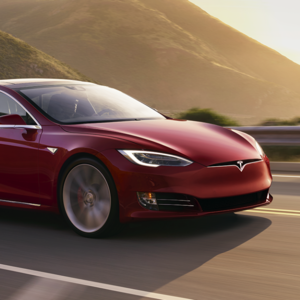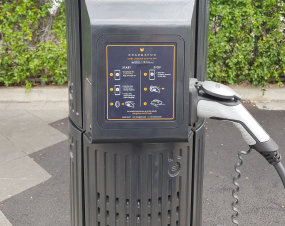Tesla have made headlines again with the reveal of their Blade Runner-inspired ‘Cybertruck’. This revolutionary pickup/ute design is unlike anything seen before on a production vehicle and marks their most controversial unveiling to-date. And it could be a watershed moment for the future of EV design, but not for the reasons you’d think.

Meet the Cybertruck
The Cybertruck shares none of the design DNA of Tesla’s range — or of any car sold today. Smooth, aerodynamic curves have given way to sharp-edged steel. It might be slated for a 2021 release, but its looks share more in common with the earliest rendered videogame cars than anything on the road in 2019.


But that divisive design has earned a lot of early fans. While Elon Musk has teased that over 200,000 pre-orders have been registered for the vehicle, this is hardly a definitive sales count. Preorders aren’t binding and only require a fully refundable $150 deposit. The Australian design site doesn’t even list specs in metric units, so Tesla clearly aren’t taking them too seriously.
That early interest comes in spite of a hit-and-miss reveal event. The allegedly bulletproof door panels held up to a sledgehammer as planned, but the windows weren’t so lucky against a fist-sized steel ball.
The Cybertruck boasts similarly impressive performance stats to Tesla’s other models. The top-of-the-line tri-motor AWD version is boasting a 6000+ kg towing capacity and a ~3 second 0-100 km/h. Plus the allegedly bulletproof exoskeleton, 800+ kms of range, and a host of ultra-modern conveniences like Tesla’s signature minimalist interior with centre touch display.
But none of this really matters — it’s not what the Cybertruck will be remembered for, anyway.
Changing faces
While the sharp-edged steel body of the Cybertruck has been grabbing all the headlines, it’s the guiding principles of the design that should have legacy automakers worried.
The Cybertruck is essentially an exoskeleton on wheels. It abandons the body on frame design of other pickups in favour of a unified body of cold-pressed steel. We don’t have any specific figures, but this is expected to significantly increase interior and bed space as well as boosting the vehicle’s structural integrity.
It’s also rejected the signature flat bonnet-and-bed design that has guided the signature pickup silhouette since their earliest days. The Cybertruck is stacked with straight lines and hard edges, but almost none of them run parallel with the ground. The lack of a bonnet eliminates the ‘frunk’ (front trunk) that many EVs have adopted, but significantly increases the amount of room in the bed.
These decisions are bold, but it’s unlikely we’ll be seeing them on new models in the short term. Automakers will be looking to make the most of their investments and their existing factories as they shift to all-electric manufacturing (if you believe they will make the transition).

Volkswagen have spent years developing and implementing the MEB architecture for future EVs; we saw it most recently on the ID.3 unveiled in Frankfurt this year. With their intention to invest billions of euros over the next five years on new models based on the platform, it’s unlikely we’ll be seeing any exoskeleton-based designs from the world’s largest automaker. The same can be said for most OEMs; they see electrification as a necessary evolution, but abandoning their entire manufacturing process and design language is almost certainly a bridge too far.

What we know about the Volkswagen ID.3
Staying, going
So which of the Cybertruck’s big design departures will make their way into mainstream auto design? Realistically, it’s unlikely to be the hard angles and the steel body. Much more promising are the exoskeleton — if it succeeds in safety tests — and the shortened front-end.
We’ll be covering the newest EVs as they emerge here, so you can check back to the JET Charge journal anytime for more EV news. Follow our Facebook page for updates or contact us at info@jetcharge.com.au with EV charging inquiries Australia-wide.



